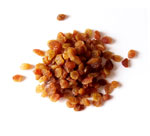Dermatology care and Telemedicine
Posted by: admin on: March 14, 2012
- In: Dermatology
- Comment!
A study of nearly 1,500 patients who had teledermatology consultations shows improved clinical outcomes, with better diagnosis and disease management
Team@CMHF
- Linking dermatologists to patients in remote areas through telemedicine gives patients more accurate diagnoses and better disease management than they would receive without access to a specialist, says a study in the January Archives of Dermatology.
- Researchers analyzed data from 1,490 patients who had teledermatology consultations and found that patients received a diagnosis that was different from the referring physician’s in 70% of cases. In 98% of cases, dermatologists recommended changes in the way patients were managing their condition.
- A lot of these changes in management did lead to an improvement in their disease, said study co-author April W. Armstrong, MD, MPH, director of teledermatology at the University of California Davis School of Medicine.
- The changes in management and the changes in diagnosis really correlated with patients’ improvement.
- Improved clinical outcomes were seen for 69% of 313 patients who had at least one follow-up visit within a year, the study said.
- Patients who had their diagnosis changed in the initial consultation were about two times more likely to show clinical improvement in future visits compared with patients whose diagnosis did not change.
- Patients in the study ranged from 3 months to 88 years old. They all had a live, interactive telemedicine visit with a dermatologist at UC Davis between 2003 and 2005.
- Researchers hope the study will help educate dermatologists, family physicians and other primary care professionals about how telemedicine can benefit their patients, said Dr Armstrong, who directs the university’s dermatology clinical research unit.
- Telemedicine is used increasingly to connect dermatologists and other specialists with patients in remote, medically underserved areas.
- This information will appeal to a lot of primary care physicians, especially those who feel that they can’t get a patient to see a dermatologist in a timely manner
- There are about 40 dermatology programs in the US which use telemedicine.
- The most common form of teledermatology is known as store and forward, in which details about the patient are recorded and sent to a specialist to review later.
- Live teledermatology requires more schedule coordination, but it provides real-time interaction between patients and physicians, the study said.
Dermatology from a distance
- A study of nearly 1,500 patients who had teledermatology consultations at the University of California Davis School of Medicine from 2003 to 2005 found that most patients benefited from a new diagnosis and altered recommendations for disease management.
|
Variable |
Percent of cases |
| Diagnosis change | 70% |
| No change in diagnosis | 30% |
| Overall change in disease management | 98% |
| Change in medication dosage | 5% |
| Stop or start medication | 68% |
| Request for more lab work | 18% |
| Intervention such as biopsy | 26 |
For further reading log on to
http://www.ama-assn.org/amednews/2012/01/30/prsc0131.htm
Search
- drchasrani: Difficult to get such a data, authenticated at that. Try Times of India online library
- rakesh pore: hi, where can i get genuine information about "10 most common drugs sold in india?" i want it for a local project
- nilesh dutta: sir, Plz give detail about MBA Sports Management Thanks and Regards


Leave a Reply